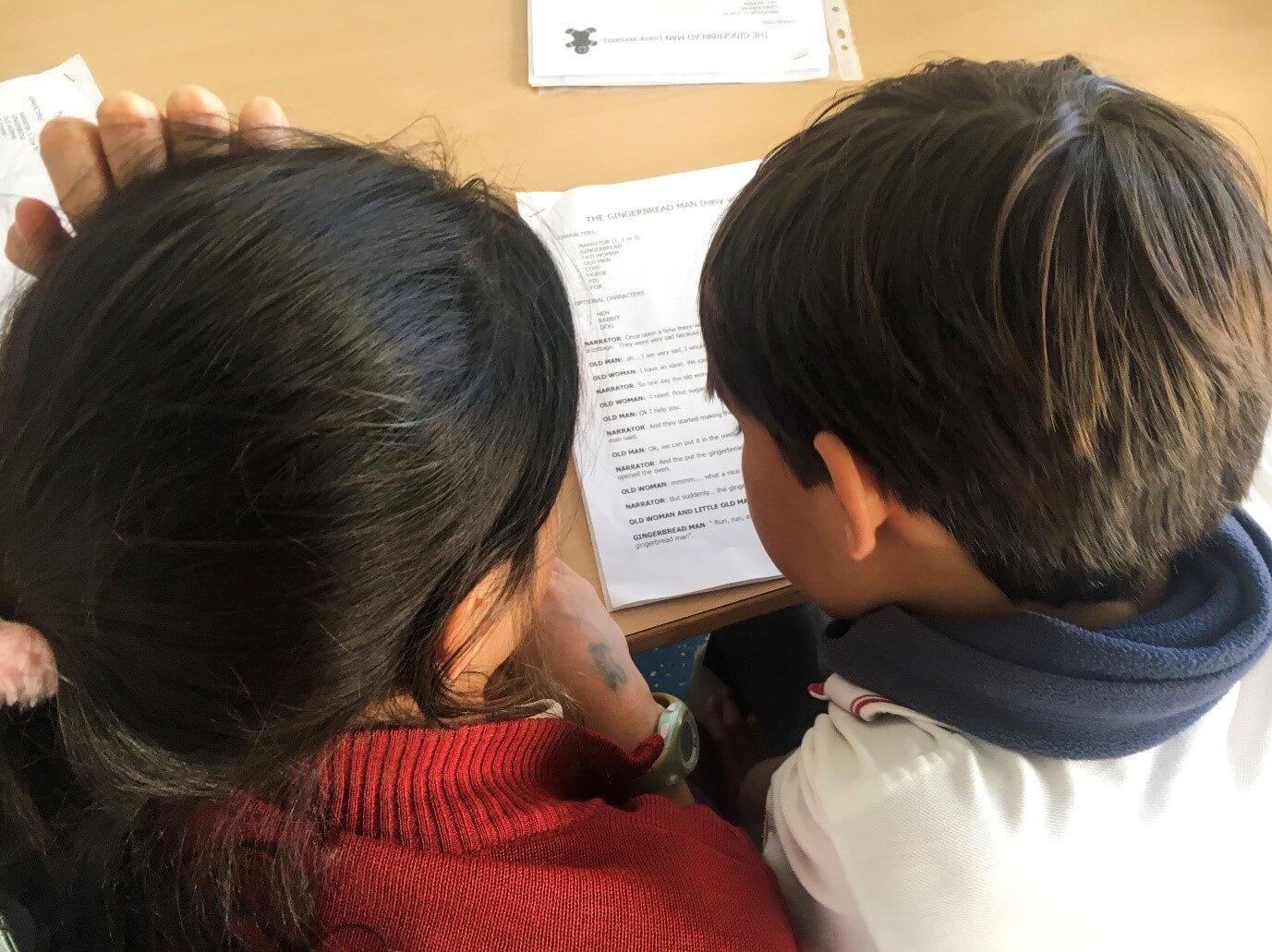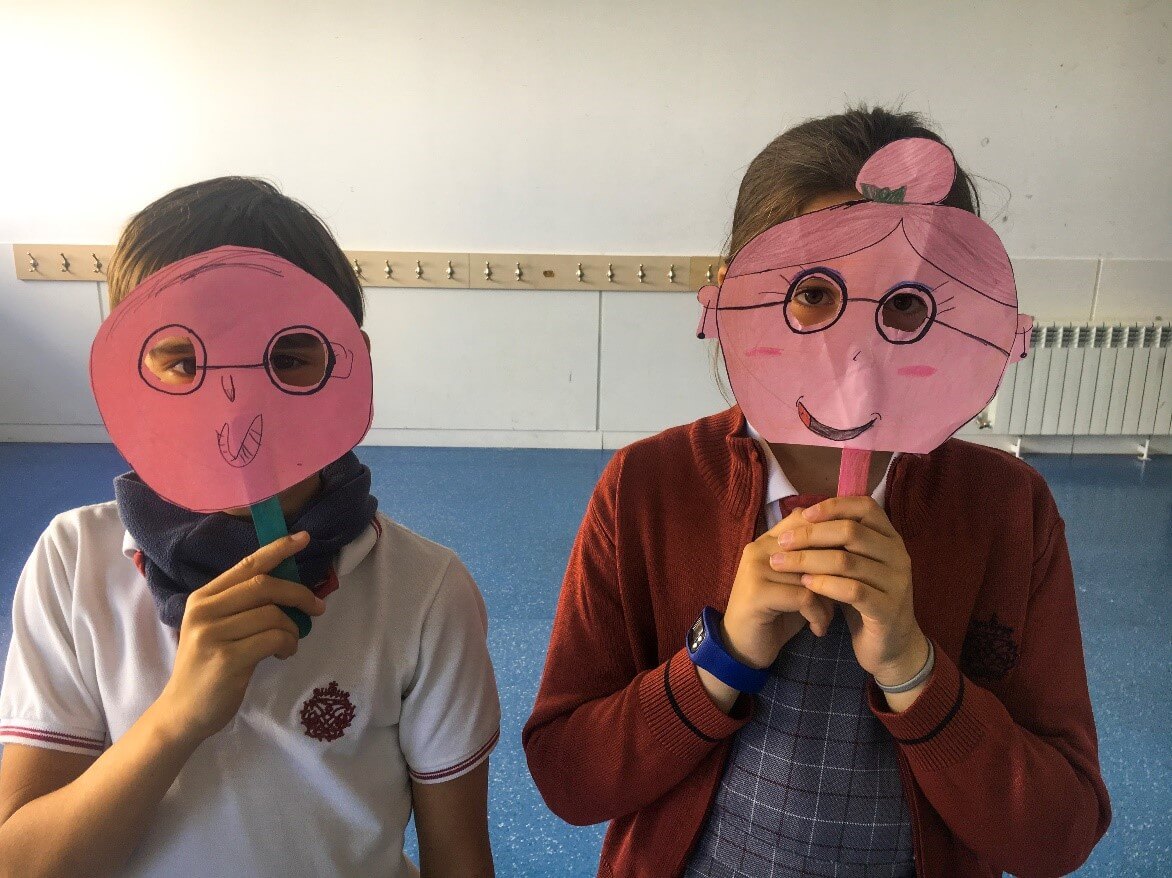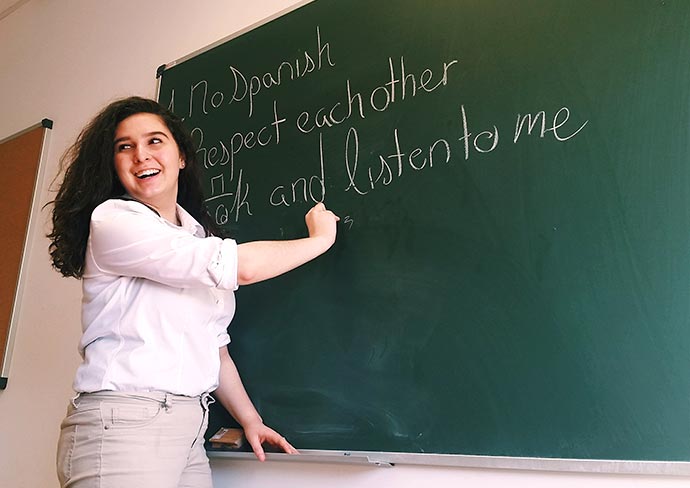Drama and language learning are like cheese and pizza… you can have one without the other, but it’s just plain BORING! Introducing drama into your teaching may seem daunting and difficult, but it’s much easier than you think to add some theatrics. From a simple charades activity to a Broadway-style production, a little drama goes a long way. There are so many benefits of using this technique in your English teaching for both you and your students. You will benefit from giving more fulfilling, lively, and fun classes and your students will benefit from a huge range of skills, such as creative thinking, fluency development, public speaking skills, a broader vocabulary, a clearer understanding of word meanings in context, intonation practice, and much more.
There is really no need to save your drama for your llama. Embrace it as much as you can! Below, are five of my favourite and most interesting drama techniques, which work across all different ages of language learners.
Giving a Voice to an Inanimate Object
How?
For this activity, you can assign your students an inanimate object. Allow them to pick one from a hat at random or allow them to choose one for themselves. Students must then write a funny monologue in the first person from the perspective of that object. Once they have written their monologues, ask them to each perform it in front of the other students. If your students are of a lower level, you can brainstorm some ideas and vocabulary beforehand, such as a mind map of feelings, sentence starters, or even a topic for them to focus their monologues on like ‘a day in school’.
Why?
This is a great activity to get your students’ creative juices flowing and take away speaking anxieties using humour. Students tend to concentrate more on making their statements funny and entertaining rather than worrying about if they are correct. Besides, it allows them to use more natural expressions. Giving your students a fun and unusual task likes this also allows them to access new vocabulary they may not previously be interested in learning. This activity also incorporates writing, speaking and listening skills in one simple activity!
Acting Out or Putting Words to an Emotion

How?
This one is similar to the classic charades game, but can also incorporate vocabulary. The aim of the game is to give students an emotion or sensation to act out or put a dialog too. You can put a selection of emotions inside a hat and have them pick one out, or have a group discussion and brainstorm emotions on a whiteboard and then, have the student whose turn it is pick one of the board. The student whose turn it is can use dialog and actions to depict the emotion, but they cannot say the name of the emotion or a synonym of the emotion, like in taboo.
Why?
This is great to teach your students about feelings along with the main teacher in situations and introduce some moral lessons into your classes. Asking your students to give a dialog to a feeling is not only improving their speaking and vocabulary but also helping them to become aware of what situations make a person feel a certain emotion, improving their empathy, and teaching them care and kindness.
Improvisation to Scenarios or Certain Characters
How?
This one is so easy to do and is a great activity for your own improvisation when your lessons run shorter than expected or even when they just don’t work out the way you expected. Basically, just give your students a piece of paper with a scenario or a character type on and ask them to invent a short drama based on this! If you want to make a longer activity out of it, you can even get your students to write up the scenarios and characters, and place them in a basket for them to pick out.
Why?
As I mentioned, this is great as a fall-back activity, but it is also a great activity to plan on. Students almost always love this because it is funny and allows them the freedom to be creative and silly. It’s an explorative activity, which is beneficial to the students, as it allows them to develop confidence in speaking and takes away anxieties, which could restrict their speaking skills in other situations, because it is a fun and laid-back activity.
Acting Out a Dialogue or Text
How?
You can literally do this with any text or dialogue, from scripts to story books and even letters and monologues. Read the text with the students and dissect some of the parts together to make sure they understand what is going on. Go through any unknown vocabulary and help put it into context for them and then. Ask them to either come up with a role play based on the text or you help them in writing a script for a roleplay and ask them to put the actions to it (depending on their level).

Why?
This one helps with a number of things. It helps students to better understand long and sometimes boring texts, which is great for if you’re asked to read long books with your students. It also helps to put texts into real-life contexts and helps the students relate more with them, understanding the cultural aspects of the texts more, and making them more motivated to keep reading the story. They will expand and implement vocabulary from reading. Then, they can use the new vocabulary from the text in a spoken context with actions and complementary scenario.

Charades
How?
I will spare you a lengthy explanation since I’m sure most of us know how to play charades, but just in case you don’t, it’s an acting game where one student mimes a vocabulary work in silence while the rest of the group guesses. You can variate this game quite a lot between one student acting and the others guessing, one student guessing and the others acting, playing in teams where two people on opposite teams act the same word and the other team members compete to guess first and so on.
Why?
This old classic may seem obvious, but it has proven effective for YEARS. If it’s not broken, don’t fix it, right? Using charades in your classroom allows students to competitively think of quick-fire vocabulary on the spot in order to guess what their peers are acting. The energy and speed of this game leave anxiety behind and give your students room to practice their vocabulary without the pressure.









